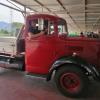Dear all,
I would appreciate, if you could help me out with my concern regarding the required relieving rate in case of control valve failure,
Is it against API 520/521 standards to take the influence of piping and fittings from the overpressure source (control valve failure in this case) to the protected vessel to calculate the required relieving rate?
I have done a rigorous dynamic simulation (including hydraulic calculations through process piping) to study the impact of control valve failure at 100% open position on vessel overpressure. Control valve failure is definitely a credible scenario in this case. However, there is a T-fitting between the control valve and the pressure vessel, which will branch the flow to two different paths. Based on my dynamic study, in case of failure, 80% of the maximum flow will naturally go towards the safe path and only 20% of it will cause overpressure in the vessel.
Piping pressure ratings are all safe and above MAWP and above upstream pressure of the control valve. I am trying to dig into the codes and standards to find if I am allowed or not to take this type of study into consideration as without considering the piping and T-fitting effect there is gonna be a massive difference in sizing.
Please note that valve is normally closed, so there is not such normal capacity credit for this case, and mostly I am focusing on the influence of piping after open failure.
Thanks a lot in advance.

 FB
FB













